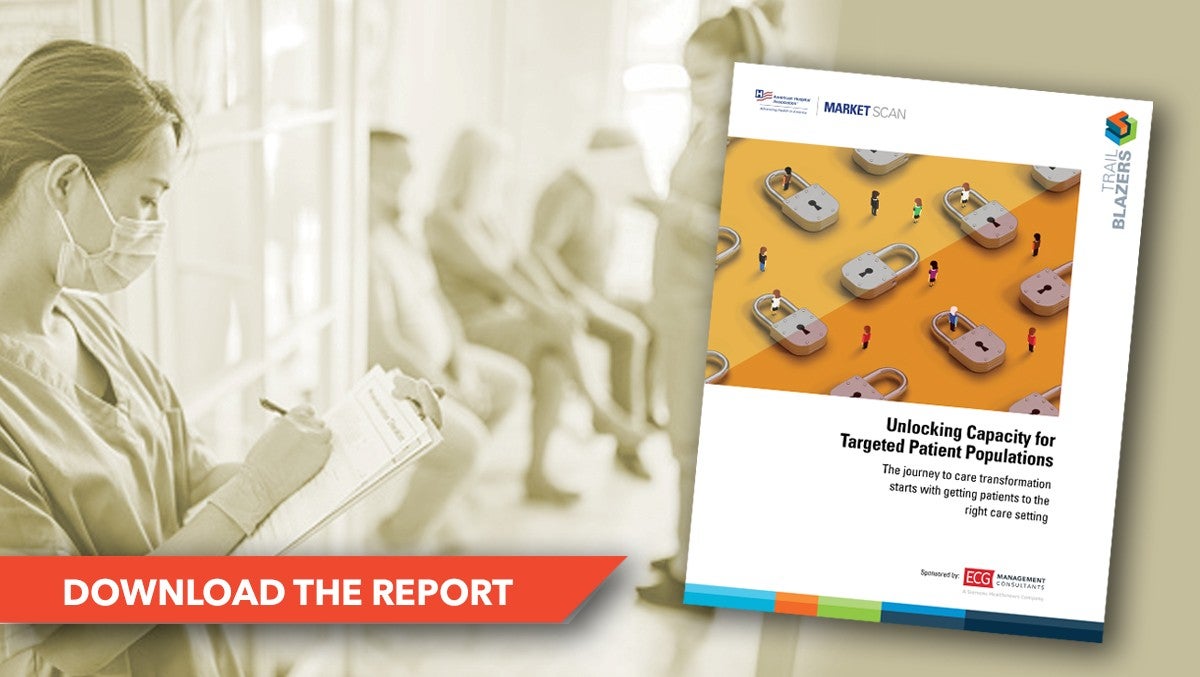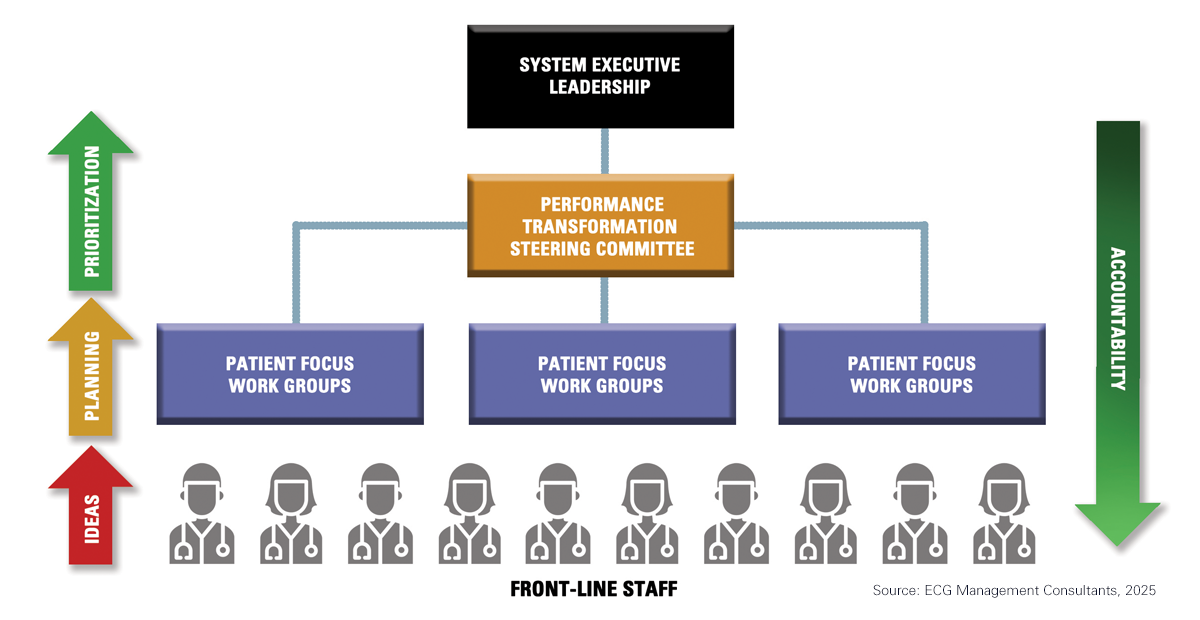

How to Unlock Capacity for Targeted Patient Populations

At many hospitals and health systems around the country, demand for services exceeds supply.
The ability of hospitals and health systems to balance this situation by increasing supply is limited by real-world challenges like financial constraints, available space and workforce shortages. The answer to this challenge, as many in the field have discovered, is care transformation.
Care transformation is a strategic objective of most, if not all, hospitals and health systems. But what is it? It’s certainly much easier said than done.
A Systematic Approach to Unlock Capacity
A new AHA Market Scan report, “Unlocking Capacity for Targeted Patient Populations,” outlines a process to surface these care transformation opportunities and shares proof of concept with case studies from two health systems.
As hospitals and health systems reposition themselves for current uncertainties and future sustainability, the ability to reduce expenses without jeopardizing access or quality becomes a coveted superpower.
Hospitals and health systems can’t simply cut costs indiscriminately. They need a systematic approach, one that considers specific segments of their patient populations.
That approach must be supported by:
- A top-down culture that empowers front-line caregivers and staff to surface ideas on how to identify and help specific patient populations.
- Meaningful data to identify and quantify specific issues within those patient populations and point to solutions to those issues.
- The commitment to deploying tools and resources to execute solutions.
- The ability to track progress to resolve those issues and connect results to broader strategic objectives of a hospital or health system.
Tap into Your Front Line, Championed by the C-Suite
Front-line caregivers and staff can be untapped resources for identifying challenges and potential solutions. A new systematic approach breaks through common barriers that prevent hospitals and health systems from tapping into those resources. It does so by building formal pathways for the C-suite to reach out to the front line to actively and regularly solicit feedback to feed ideas to a care transformation steering committee.
The committee is responsible for vetting the challenges and solutions using meaningful data. They could be existing data, data from other sources or new data. Then, do the data verify the challenge? Do the data support the possible solution? And what is the potential return on investment (ROI) in the solution?

With those answers, the care transformation steering committee prioritizes the work to be done based on the strategic objectives set by the C-suite. The committee assigns the work to various groups with results fed through the committee to the C-suite. The C-suite approves the transformation work to be done and provides the tools and resources to make the care transformation a reality.
4 Secrets to Success
Putting such a care transformation framework in place doesn’t guarantee success. Hospitals and health systems can substantially increase their chances of success if they adopt the following best practices:
1 | Ensure multidisciplinary participation.
Think of all the different administrative, clinical, financial and operational departments that touch a patient during one episode of care. If a hospital or health system is, in effect, redesigning that single episode of care, those same departments must be involved in the care transformation process from the start.
Get the chief financial officer (CFO) involved. Hospital and health system CFOs have undergone their own job transformations, from bean counters to strategic advisers. It’s incumbent upon work groups testing care transformation ideas to tap the expertise of CFOs. They can assist work groups in calculating the ROI in an idea.
2 | Ascertain service availability.
This is where care transformation ideas meet reality. If the goal of a care transformation idea is unlocking capacity by targeting the health care needs of a specific patient population, meeting those needs may require access to other services. Those services may include post-acute care, regular follow-up care or access to community or social services. Knowing what is needed and what is available are essential.
3 | Establish KPIs early.
Know what success looks like. Work groups testing care transformation ideas must know what the end game is and how it advances the organization’s overarching strategic objective. They also must know what key performance indicators (KPIs) to adopt to monitor their progress toward that end game. The set of KPIs must include those that are idea-specific and those that are enterprise-wide.
4 | Think program, not project.
Hospitals and health systems that successfully transform care do not see care transformation as a project, although care transformation may be built on thousands of little projects. Projects have starts and stops. True care transformation is infinite. It transforms care for specific patient populations from this moment forward. Culturally, think program, not project.
Download the full Trailblazers report, to learn how the University of Vermont Health Network and Baptist Health South Florida are transforming their care delivery processes to unlock capacity for targeted populations.



